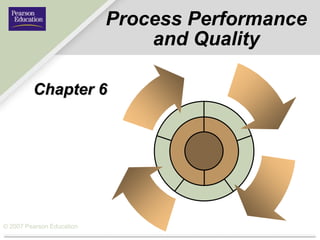This document discusses process performance and quality management. It defines key terms like defects, prevention costs, appraisal costs, internal failure costs, external failure costs, and total quality management. Total quality management focuses on customer satisfaction, employee involvement, and continuous improvement. Statistical process control methods like control charts are used to monitor processes and identify sources of variation. Control charts can detect when a process is out of statistical control due to assignable causes. The document provides examples to demonstrate how to create control charts and determine if a process is in control.

































































